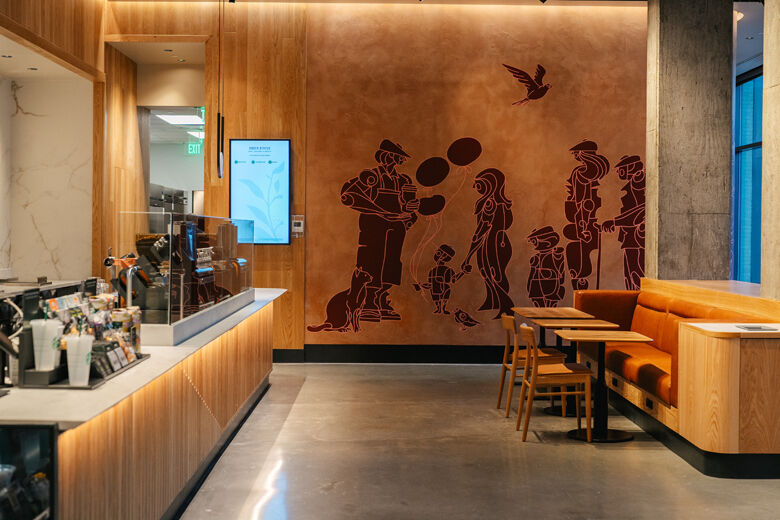





The new Starbucks at 331 N Street NE in D.C.’s Union Market neighborhood is the first in the nation to feature a new design that makes the store experience more accessible for customers and employees with disabilities.
The changes better serve those with physical disabilities, including deaf and blind customers and employees.
Some changes are obvious, such as power-operated doors, lower counters and point-of-sale systems with adjustable stands for visibility and voice-assisted ordering.
Other design tweaks are more subtle, such as improved acoustics thanks to materials that reduce background noise and reverberation that can interfere with hearing aids. The lights inside the store minimize glare and shadows that can interfere with visual communication.
The customer order status boards are among the most noticeable additions. The digital displays update where orders are in the process and when the orders are ready to be picked up.
These design changes go beyond standard Americans with Disabilities Act (ADA) requirements.
“Starbucks opening of their new store built with inclusive design elements is a big moment as we try to make retail spaces more accessible and inclusive,” said Tony Coelho, a former U.S. congressman, primary author and sponsor of the ADA. “We have to go beyond just what is required to put accessibility and inclusion first to ensure all people feel like they belong in community spaces.”
The store layout is more accommodating to wheelchairs, with unobstructed paths of travel, and changes go beyond customer accommodations. New brewing machines have dials and indicators that are easy to use for deaf and hard-of-hearing employees.
Starbucks calls the new store design its “Inclusive Spaces Framework,” and it will be used in all newly-built and renovated Starbucks company-owned stores in the United States.
Starbucks plans to grow the number of its U.S. stores by 4% this year.
Get breaking news and daily headlines delivered to your email inbox by signing up here.
© 2024 WTOP. All Rights Reserved. This website is not intended for users located within the European Economic Area.








